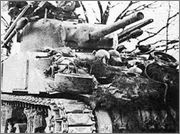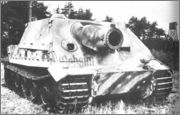Sherman rocket launcher T40/M17 [WhizBang] armed with 20 7.2" rockets. Saw limited combat in 1944-45. A short variant of the T40 was also developed, but saw little usage.
Being intended for firing from only a hundred meters with a maximum range of barely a thousand meters. After being rejected for use on D-Day in Normandy, and after being used with little success during Operation Anvil in southern France, the army decided to hand over the surviving launchers to tank battalions in the Italian theater for possible use in the artillery role.
The 752nd and 760th Tank Battalions each converted a tank platoon with four T40 Whiz-Bang launchers in mid-August 1944. These rocket platoons did not serve with their parent units, but were instead transferred to the 755th and 757th Tank Battalions for operations along the Gothic line. They were used in very small numbers and had modest results. In December 1944, the 525th Ordnance Battalion converted eight T40 launchers by replacing the 7.2 inch demolition rockets with the longer-range 4.5 inch aircraft rocket launcher. They served with the 752nd and 760th Tank Battalions and saw combat starting in March 1945.
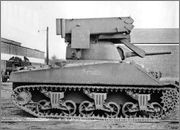
Sherman rocket launcher T34 [Calliope] armed with 60 4-6" rocket tubes mounted above the turret. Saw limited combat in 1944-1945
http://www.752tank.com/rockettanks.html
After gaining experience with the weapons in the field, the 752nd tankers generally did not like the rocket tanks because they had too short a range, took too long to prepare, and were top-heavy and cumbersome in the Italian mountain terrain. Last but certainly not least, they tended to draw a lot of enemy fire.
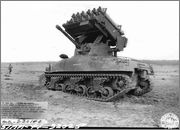
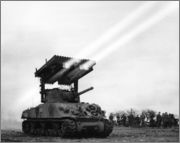
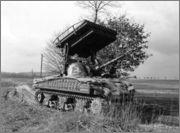
Sherman [Tulip] with two 3-inch ("60lb") RP-3 rockets on rails added to the turret. Used by the 1st Coldstream Guards at the Rhine in 1945.
http://overlord-wot.blogspot.com/2013/08/rocket-and-roll-out.html
Despite this lack of impact in its first action the Coldstream Guards continued to use Tulips until the end of the war. They proved their worth many times over, with one tank commander crediting the presence of Tulips as being the reason they took far less casualties than expected. One engagement demonstrates this perfectly.
German paratroopers from the 7th Fallschirmjager Division had turned a wood into a strong point, and was severely delaying the advance and causing heavy casualties to the allied infantry. Two troops of Tulips arrived and fired their rockets at the range of 400 yards. The Germans instantly surrendered, and were described in a report as "very shaken".
